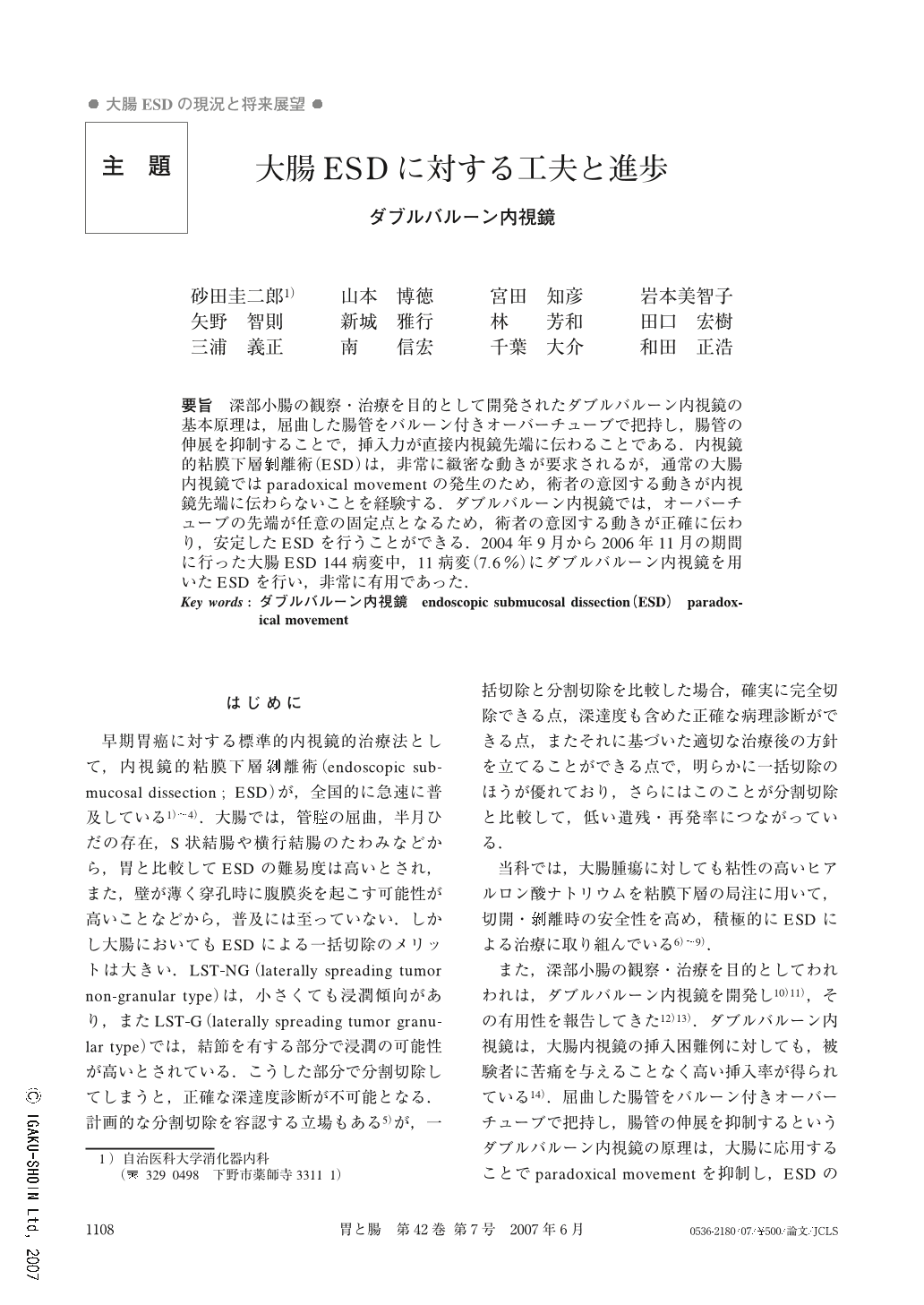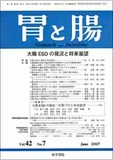Japanese
English
- 有料閲覧
- Abstract 文献概要
- 1ページ目 Look Inside
- 参考文献 Reference
- サイト内被引用 Cited by
要旨 深部小腸の観察・治療を目的として開発されたダブルバルーン内視鏡の基本原理は,屈曲した腸管をバルーン付きオーバーチューブで把持し,腸管の伸展を抑制することで,挿入力が直接内視鏡先端に伝わることである.内視鏡的粘膜下層剥離術(ESD)は,非常に緻密な動きが要求されるが,通常の大腸内視鏡ではparadoxical movementの発生のため,術者の意図する動きが内視鏡先端に伝わらないことを経験する.ダブルバルーン内視鏡では,オーバーチューブの先端が任意の固定点となるため,術者の意図する動きが正確に伝わり,安定したESDを行うことができる.2004年9月から2006年11月の期間に行った大腸ESD144病変中,11病変(7.6%)にダブルバルーン内視鏡を用いたESDを行い,非常に有用であった.
Double balloon endoscopy (DBE) was originally developed for endoscopic investigation and intervention of the entire small intestine. It has been shown to be useful for difficult colon intervention as well. The principle of DBE is that by holding the intestinal wall with a balloon attached to the distal end of a soft overtube, the endoscope can be inserted further without intestinal extension.
ESD for colorectal superficial lesions is thought to be difficult because very delicate endoscopic control is needed to carry out the procedure without complications such as perforation.
Using a conventional colonoscope, even an expert endoscopist may struggle to control the endoscope to carry out ESD if the lesion is located in a difficult position of the colon.
In order to facilitate the procedure, we applied DBE for colorectal ESD (DBE-ESD) in eleven lesions (7.6% of a total of144colorectal ESD cases) from September, 2004 to November, 2006 and its usefulness was suggested.

Copyright © 2007, Igaku-Shoin Ltd. All rights reserved.


